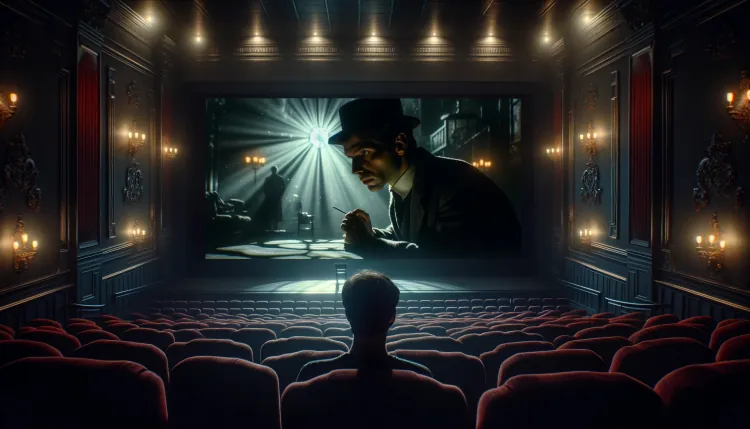Delving into Dark Cinema: A Study of Its Allure and Impact
Discover the intriguing world of dark cinema, exploring its origins, thematic depth, visual style, and cultural significance in reflecting societal issues

Exploring the Shadows: The Lure and Impact of Dark Cinema
In the realm of film, "dark cinema" does not refer merely to the dimly lit corridors of haunted houses or the noir streets where detectives chase shadows. Instead, it encompasses a genre that delves into the more unsettling, often disturbing aspects of human nature and society. Dark cinema, a compelling subset of the film industry, invites viewers to explore complex emotions, confront uncomfortable realities, and question moral ambiguities through its unique narrative and aesthetic choices.
Origins and Evolution
The roots of dark cinema can be traced back to the German Expressionist films of the early 20th century, such as "The Cabinet of Dr. Caligari" (1920) and "Nosferatu" (1922). These films used stark shadows and angular imagery to create a sense of anxiety and surrealism, influencing later filmmakers in both style and substance. Film noir of the 1940s and 1950s, with its themes of existential dread and moral ambiguity, further paved the way for dark cinema by exploring the darker sides of human nature and the bleakness of the human condition.
Characteristics of Dark Cinema
Dark cinema is characterized by its thematic and visual darkness. Thematically, these films often explore psychological depth, presenting flawed, complex characters whose motives are ambiguous or deeply troubled. They tackle subjects like mental illness, existential despair, societal collapse, and moral corruption, challenging the audience's perceptions and beliefs.
Visually, dark cinema employs a muted color palette, stark lighting contrasts, and shadow-laden scenes. These elements combine to create a foreboding atmosphere that mirrors the internal turmoil of the characters or the oppressive nature of the environments they inhabit.
Cultural Impact
Dark cinema holds a mirror to the darker facets of society, reflecting back to us our fears, biases, and the unsettling aspects of human behavior. Films such as "Se7en" (1995), "Fight Club" (1999), and "Requiem for a Dream" (2000) do not merely entertain but provoke introspection about the consequences of human actions and the societal structures that shape them. By engaging with such themes, dark cinema encourages a deeper understanding of the human psyche and societal issues.
Notable Filmmakers and Films
Directors like David Fincher, Darren Aronofsky, and Christopher Nolan have made significant contributions to dark cinema. Fincher’s "Gone Girl" (2014) and "Zodiac" (2007) offer insights into the abyss of human nature and the obsession with understanding evil. Aronofsky’s "Black Swan" (2010) explores the destructive pursuit of perfection, while Nolan’s "Memento" (2000) and "The Dark Knight" (2008) challenge the boundaries between heroism and villainy.
Conclusion
Dark cinema serves as a vital artistic medium that challenges its audience to confront uncomfortable truths about the human condition and societal norms. By embracing the dark, these films provide a cathartic space for viewers to explore their own fears and anxieties, making it a uniquely impactful genre in the cinematic world. As society continues to grapple with complex issues, dark cinema remains a poignant and essential form of cultural expression, reminding us of the power of film to reflect and affect human thought and behavior.
What's Your Reaction?






















